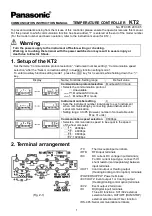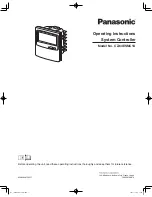
114
Chapter 7
535-PROF User's Manual
Applications
temperature sensor
Figure 7.20
Heat Exchanger Control Loop for
Steam Supply
7. Use
SHED OUT
to specify an output level if the unit sheds and trips to manual
control.
8. To specify a control setpoint (in case the host is supervising the setpoint) if
the 535 sheds.; Set
SHED SP
to DESIG. SP and then, set the parameter
DESIG. SP
to the desired setpoint.
V. CASCADE CONTROL
While a single 535 Controller is effective in maintaining many control systems,
others require more sophisticated control schemes.
Figure 7.19, shows a sample
control set up with a 535 controller. Cascade control is often used to control a
process more precisely. In cascade control, a second variable is monitored in
addition to the primary controlled variable. This second variable is one that more
quickly reflects any changes in the process environment.
Cascade control involves installing one feedback loop within another, as in
Figure
7.20. This second loop, based on steam pressure, is called the inner or secondary
feedback loop. The outer or primary feedback loop is based on the temperature
of the liquid in the heat exchanger. However, instead of directly positioning the
steam valve, the output of the primary 535 controller is now used to adjust the
setpoint of the secondary 535 controller, which then positions the valve.
Cascade Control is typically used for the following:
• A slow responding process with a significant lag time
• A process requiring more advanced or tighter control
• A process where two PID control loops need to interact to achieve optimum
control. Cascade control is commonly implemented in temperature control
applications where the main control variable is affected by another variable,
i.e., pressure.
Example
















































